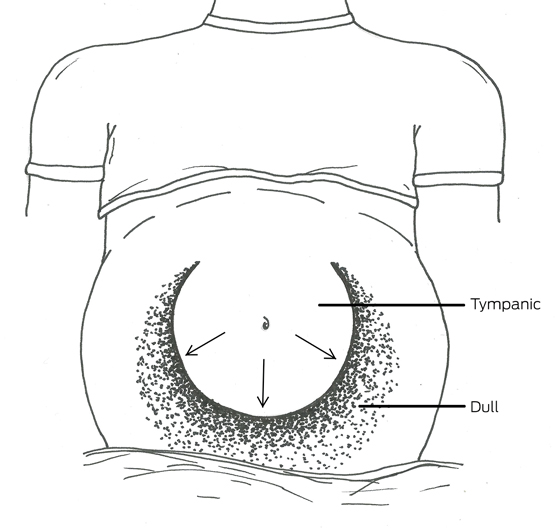These drugs have revolutionised the management of gastrointestinal diseases, but their long term use may have risks
Proton pump inhibitors (PPIs) suppress gastric acid secretion by selectively inhibiting the enzyme hydrogen–potassium adenosine triphosphatase, located in gastric parietal cells. These drugs superseded H2-receptor antagonists as first-line acid suppressants in the 1980s, and their potent effect has revolutionised the management of common upper gastrointestinal (GI) disorders, including gastro-oesophageal reflux disease, peptic ulcer disease, and functional dyspepsia. These drugs are also widely used as part of regimens designed to eradicate Helicobacter pylori infection, and as prophylaxis against the deleterious effects of non-steroidal anti-inflammatory drugs on the GI tract.
PPIs are among the most commonly administered medications worldwide. In recent years, there has been a marked increase in prescribing PPIs,1 concurrent with an overall reduction in their cost with the advent of inexpensive generic formulations. This reduction in cost is likely to have contributed to injudicious overprescribing of PPIs, with up to 60% of primary care physicians making no attempt to reduce patients’ doses over time, and almost 50% of patients receiving long term PPI therapy having no clear indication for its continuation.2 Despite their well documented benefits, the use of PPIs may be associated with an increased risk of certain GI and non-GI conditions.
Gastrointestinal risks of proton pump inhibitor use
Commensal bacteria are thought to influence and maintain metabolic and immune pathways in the gut. Manipulation of GI microbiota has been identified as a potential target for therapeutic intervention in the management of several GI disorders, including irritable bowel syndrome and inflammatory bowel disease, by means of faecal microbial transplantation or the use of prebiotics, probiotics, symbiotics or antibiotics. Changes in the faecal microbiome have also been identified in PPI users, with a reduction in the α-diversity of bacterial communities observed in the gut,3 presumably secondary to the alteration in pH of the intestinal luminal contents. This reduction in bacterial diversity may be associated with an increased risk of developing GI infections. A meta-analysis of observational studies reported increased odds of taking PPIs for patients with Clostridium difficile-associated diarrhoea (odds ratio [OR], 1.96; 95% CI, 1.28–3.00) and other enteric infections, including with Salmonella and Campylobacter species (OR, 3.33; 95% CI, 1.84–6.02).4
Aside from any potential association with enteric infection, diarrhoea is a common side effect of PPI use. The cause of this is uncertain, although a case–control study noted increased odds of microscopic colitis (OR, 3.37; 95% CI, 2.77–4.09),5 and, in a meta-analysis, small intestinal bacterial overgrowth (SIBO) was found to be more common in PPI users (OR, 2.28; 95% CI, 1.24–4.21).6 Given that both of these conditions present with diarrhoea, which is a side effect of PPIs, it may be that this association is the result of detection bias, as individuals using PPIs are more likely to be investigated to rule out microscopic colitis or SIBO.
The hypergastrinaemia documented in long term PPI users has led to concerns about the possibility of enterochromaffin-like cell hyperplasia being associated with PPIs, and therefore a theoretical increase in the risk of neuroendocrine tumour development, although this has not been substantiated.7 Observational studies also report an increase in the incidence of gastric fundic gland polyps (FGPs) in patients using PPIs long term. Although these polyps are benign, this has raised the possibility that long term PPI use could lead to an increased risk of gastric cancer. A recent systematic review and meta-analysis investigating the association between PPI use and the incidence of FGPs suggested a statistically significant increase in the odds of developing such polyps (OR, 2.45; 95% CI, 1.24–4.83), with a longer duration of exposure further increasing this risk.8 In the same meta-analysis, the risk of PPI-associated gastric cancer was examined in a small number of studies of heterogeneous design, and a small increase in the risk of gastric cancer was observed (risk ratio [RR], 1.43; 95% CI, 1.23–1.66). However, follow-up in these studies extended to a maximum of 36 months, a timeframe one would consider too short to develop gastric cancer de novo. This suggests that the association may be the result of protopathic bias, or reverse causation, with PPI therapy more likely to be initiated in individuals presenting with dyspepsia, which may herald early gastric cancer.
The anti-secretory properties of PPIs can also lead to the development of vitamin B12 and magnesium deficiencies. Gastric acid is required to facilitate the breakdown of digestible vitamin B12, and the risk of vitamin B12 deficiency may be increased in people with achlorhydria. In a retrospective case–control study investigating risk factors for the development of vitamin B12 deficiency, PPI exposure greater than 2 years was associated with a significant increase in the odds of vitamin B12 deficiency (OR, 1.65; 95% CI, 1.58–1.73), with a dose–response relationship observed.9 Similarly, the intestinal absorption of magnesium is adversely affected by an increase in luminal pH. A meta-analysis of studies examining this question also suggested increased odds of hypomagnesaemia with PPI use (OR, 1.78; 95% CI, 1.08–2.92).10 The United States Food and Drug Administration recommends monitoring of serum magnesium levels before commencing PPI therapy and periodically thereafter if long term use is likely to be required.
Non-gastrointestinal risks of proton pump inhibitor use
Conflicting evidence regarding the association between PPI use and the risk of bone fracture has been reported. Potential pathophysiological mechanisms include impaired intestinal calcium absorption and alterations in bone metabolism, mediated by inhibition of osteoclast proton pumps. A meta-analysis reported increased odds in patients taking PPIs of hip fracture (OR, 1.25; 95% CI, 1.14–1.37) or vertebral fracture (OR, 1.50; 95% CI, 1.32–1.72).11 However, no dose–response relationship was observed and significant heterogeneity was noted. Given the observational nature of the included studies, it is likely that these findings are secondary to unmeasured confounding, with PPI users being more likely to have a comorbid condition, such as obesity or tobacco smoking, that is associated with both PPI use and an increased risk of fracture.
The association between PPI use and community-acquired pneumonia (CAP) has been investigated, again with conflicting results from the numerous observational studies. A meta-analysis of these studies indicated an increase in the odds of developing CAP with short term PPI use (OR, 1.92; 95% CI, 1.40–2.63), but not with prolonged use (OR, 1.11; 95% CI, 0.90–1.38).12 This lack of a dose–response relationship, the absence of any plausible pathophysiological mechanism to explain the association, and the significant heterogeneity of the included studies cast doubt on this association, again suggesting prescription channelling may have influenced the study findings.
The most common side effect of antiplatelet medication is GI haemorrhage secondary to peptic ulcer disease, resulting in the prophylactic use of PPIs for gastro-protection in many patients with cardiovascular disease. A reduction in the in vitro antiplatelet effect of clopidogrel, when used in conjunction with omeprazole, led to concerns about a possible increase in cardiac event rates when these drugs were co-prescribed after percutaneous coronary intervention.13 However, a randomised controlled trial (RCT) investigating the incidence of GI complications and subsequent cardiac events in patients randomly allocated to receive either dual antiplatelet therapy and omeprazole, or dual antiplatelet therapy and placebo found that there was no difference in the cardiac event rate in patients receiving omeprazole or placebo (hazard ratio [HR], 0.99; 95% CI, 0.68–1.44), but a significant reduction in overt upper GI bleeding was noted with omeprazole (HR, 0.13; 95% CI, 0.03–0.56).14
The incidence of dementia is increasing. A recent cohort study suggested PPI use may be a risk factor for the onset of dementia in patients aged over 75 years, after adjusting for potential cardiovascular, cerebrovascular, and pharmacological confounders (HR, 1.44; 95% CI, 1.36–1.52).15 However, morbidity and mortality associated with adverse events, including those associated with GI bleeding, were not assessed, meaning that the effect of unmeasured confounding could not be accounted for and, in a case–control study, PPIs appeared to protect against dementia (OR, 0.93; 95% CI, 0.90–0.97).16 Despite this, it is plausible that PPIs may increase the risk of dementia, as there is evidence suggesting that PPIs cross the blood–brain barrier, and may promote the production, or impair the degradation, of amyloid,17 although another potential mechanism could be through the effects of PPIs on vitamin B12 absorption, as discussed above.
Conclusion
Although PPIs have revolutionised the management of several upper GI disorders, their use may be associated with intestinal and extra-intestinal complications. Most studies that have exposed these risks are observational and retrospective in nature. In the only RCT that has examined the impact of one of these associations on patients, no increase in the risk of cardiac events was observed with PPIs. Unlike RCTs, the inherent flaws of observational studies do not account for unmeasured bias and confounding, and only provide evidence for the presence or absence of an association, rather than a causal link between PPI use and the risk of such complications. Moreover, the magnitude of the increased associations observed in many of these studies, although statistically significant, is unlikely to be large enough to be clinically relevant, and is probably explained by a combination of residual confounding, prescription channelling, and protopathic bias. Patients should therefore be informed that the benefits of PPIs outweigh any potential deleterious effects. Nevertheless, just like any other drug, PPIs should be prescribed judiciously, with a clear indication and regular review of the appropriateness of continued long term use to minimise these theoretical risks. Currently, no routine monitoring of PPIs is recommended other than periodic measurement of serum magnesium levels if long term use is required.

 more_vert
more_vert
